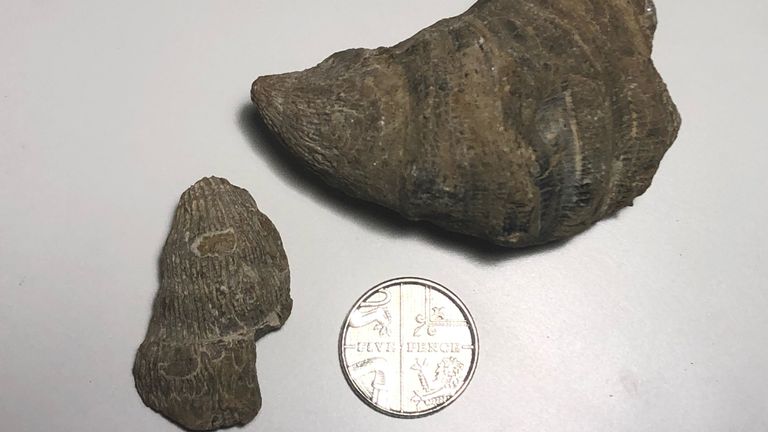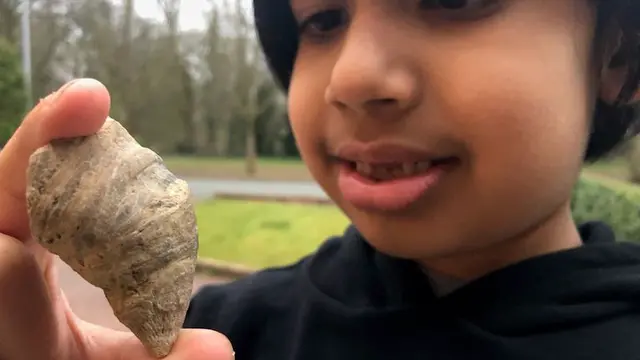A six-year-old boy has found a fossil up to 488 million years old while digging in his garden with a fossil-hunting set he received for Christmas.
Siddak Sing Jhamat, known as Sid, had been digging in his garden "for worms and things like pottery and bricks," he said.
"I just came across this rock which looked a bit like a horn, and thought it could be a tooth or a claw or a horn, but it was actually a piece of coral which is called horn coral. I was really excited about what it really was."

Image:The fossil dates back to the era of Pangea, 488 million years ago. Pic: Vish Singh/PA
His father Vish Singh said: "We were surprised he found something so odd-shaped in the soil.
"He found a horn coral, and some smaller pieces next to it, then the next day he went digging again and found a congealed block of sand.
"In that there were loads of little molluscs and seashells, and something called a crinoid, which is like a tentacle of a squid, so it's quite a prehistoric thing," Mr Singh added.
Fortunately for the pair, Mr Singh was able to identify the findings courtesy of a fossil group on Facebook which he was a member of.
The group identified the find as most like a Rugosa coral, estimated to be between 251-488 million years old.
"The period that they existed from was between 500m and 251m years ago, the Paleozoic era," Mr Singh explained.
"England at the time was part of Pangea, a landmass of continents. England was all underwater as well."
Unlike the south of England's Jurassic Coast, the family said the area they live in isn't well known for its fossils - although they have a lot of natural clay in the garden where Sid's findings were unearthed.
The family added that they hoped to tell Birmingham University's Museum of Geology about their discovery.
Mr Singh said: "Lots and lots of people have commented on how amazing it is to find something in the back garden.
"They say you can find fossils anywhere if you look carefully enough, but to find a significantly large piece like that is quite unique," he added.
 简体中文
简体中文



